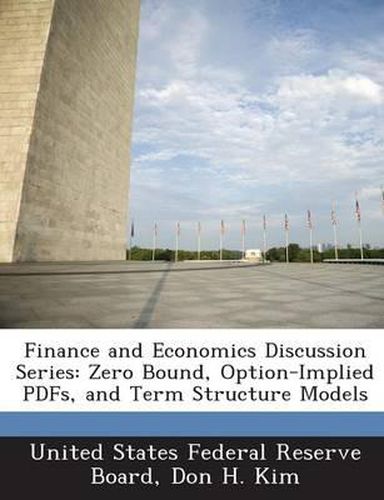Readings Newsletter
Become a Readings Member to make your shopping experience even easier.
Sign in or sign up for free!
You’re not far away from qualifying for FREE standard shipping within Australia
You’ve qualified for FREE standard shipping within Australia
The cart is loading…






This paper points out that several known ways of modeling non-negative nominal interest rates lead to different implications for the risk-neutral distribution of the short rate that can be checked with options data. In particular, Black’s boundary models (“interest rates as options”) imply a probability density function (pdf) that contains a Dirac delta function and a cumulative distribution function (cdf) that is nonzero at the zero boundary, while models like the CIR and positive-definite quadratic-Gaussian (QG) models have a zero cdf at the boundary. Eurodollar futures options data are found to favor Black’s boundary models: the CIR/QG models, even multifactor versions, have difficulty capturing option prices accurately not only in low interest rate environments but also in higher interest rate environments, and data in early 2008 provide an almost tangible signature of the Dirac delta function in Black’s boundary pdf models. Options data also contradict the prediction of well-known models whose cdf is zero at the zero boundary, namely that the risk-neutral pdf is always positively skewed.
$9.00 standard shipping within Australia
FREE standard shipping within Australia for orders over $100.00
Express & International shipping calculated at checkout
This paper points out that several known ways of modeling non-negative nominal interest rates lead to different implications for the risk-neutral distribution of the short rate that can be checked with options data. In particular, Black’s boundary models (“interest rates as options”) imply a probability density function (pdf) that contains a Dirac delta function and a cumulative distribution function (cdf) that is nonzero at the zero boundary, while models like the CIR and positive-definite quadratic-Gaussian (QG) models have a zero cdf at the boundary. Eurodollar futures options data are found to favor Black’s boundary models: the CIR/QG models, even multifactor versions, have difficulty capturing option prices accurately not only in low interest rate environments but also in higher interest rate environments, and data in early 2008 provide an almost tangible signature of the Dirac delta function in Black’s boundary pdf models. Options data also contradict the prediction of well-known models whose cdf is zero at the zero boundary, namely that the risk-neutral pdf is always positively skewed.